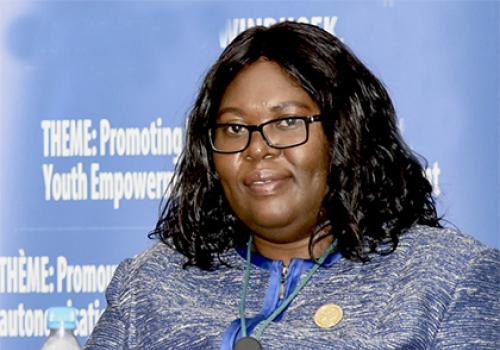The Southern African Development Community (SADC) National Media Coordinators have been urged to continue working with the SADC Secretariat to strengthen the Region’s strategic communication and increase understanding and awareness of SADC, its value proposition, its activities, and its impact in all Member States and globally.
This came out of a webinar for the SADC National Media Coordinators (NMCs) convened on 19th November 2021 to discuss interventions to facilitate enhanced awareness, communication and visibility of SADC in Member States.
The NMCs are the focal points for SADC communications and movers of the SADC Communication and Promotions Strategy at national level. They spear-head the implementation of the strategy at national level by formulating a media and public relations campaign plan for implementation at national level; provide a link between SADC Secretariat and the local media intermediaries for quick dissemination of information; and compile, maintain and update a mailing list of all the media in their countries.
The SADC NMCs also compile and maintain a list of all communication focal points in government ministries; facilitate resource mobilisation for the implementation of the SADC Communication and Promotions Strategy at the national level; facilitate awareness of SADC protocols and SADC policy instruments among Member States; and ensure a link between SADC website and government websites in Member States; among other functions.
Speaking at the webinar, SADC Senior Officer – Communication and Public Relations, Ms Barbara Lopi, called for the dissemination of more information about SADC, saying citizens of the Region have limited awareness and knowledge about SADC, its relevance, value proposition, and successes.
She pointed out that the Regional Indicative Strategic Development Plan (RISDP) 2020-2030 has therefore outlined enhanced awareness and visibility of SADC, its activities, and impact in all Member States and globally, among the strategic objectives to facilitate realisation of the SADC regional integration agenda. The RISDP 2020-2030 describes communication, visibility, and awareness as critical aspects of the successful implementation of RISDP 2020–2030.
The RISDP 2020-2030 highlights that the Region requires enhanced visibility and awareness as a means to trigger and maintain the interest, awareness, and participation of the SADC citizenry and Member State officials responsible for driving the regional integration agenda.
Ms Lopi said SADC’s regional integration agenda is a big deal because SADC, with its 16 Member States, its combined Gross Domestic Product of close to US$700 billion, and its combined population of 342 million, of which 74.6 are youths, present immense, and limitless opportunities for investments and economic growth that can result in improved livelihoods.
Highlighting the importance of information dissemination about SADC, Ms Lopi said the Region has abundant natural resources, including water, minerals, wildlife and a huge market, in terms of its combined population and GDP, and the 16 Member States have adopted more than 33 protocols and a number of declarations, agreements, as well as systematic strategic plans including the RISDP; Strategic Indicative Plan for the Organ on Politics, Defence and Security Cooperation; SADC Industrialisation Strategy and Roadmap (2015-2063); and SADC Regional Infrastructure Development Master Plan, which have laid a strong legal, institutional and strategic foundation for advancing regional cooperation.
During the COVID 19 pandemic for example, SADC protocols on Health, Trade in Services, and on Transport, among others, have been useful in facilitating information sharing and coordinated regional approaches in responding to the pandemic, and thus contributing to saving lives and livelihoods.
In situations of security threats, the Region has used its protocols, agreements and Memorandums of Understanding to mobilise and provide support to affected Member States.
Through these protocols and agreements, cooperation, coordination and management of transboundary resources such as water, energy and wildlife has improved and thus reducing potential conflicts over shared resources. Examples of such cooperation include the establishment of River Basin Organisations and Transfrontier Conservation Areas across the Region.
During the webinar, NMCs from Angola, Botswana, Democratic Republic of Congo, Eswatini, Lesotho, Madagascar, Malawi, Mauritius, Namibia, United Republic of Tanzania, Zambia and Zimbabwe reflected and deliberated on the level of visibility of SADC in the respective Member States.
The NMCs shared experiences of what has been done and what can be done to improve communication and visibility of SADC programmes and activities; how they are facilitating awareness and visibility of SADC; and what can be done at the Member States level, and at the Secretariat level to enhance communication and visibility of SADC.
Promoting the visibility and awareness of SADC programmes in Member States included the training of journalists, programmes on social media, television, radio and other media. This also included disseminating information about SADC and its programmes to citizens in the rural and remote of areas of Member States.

